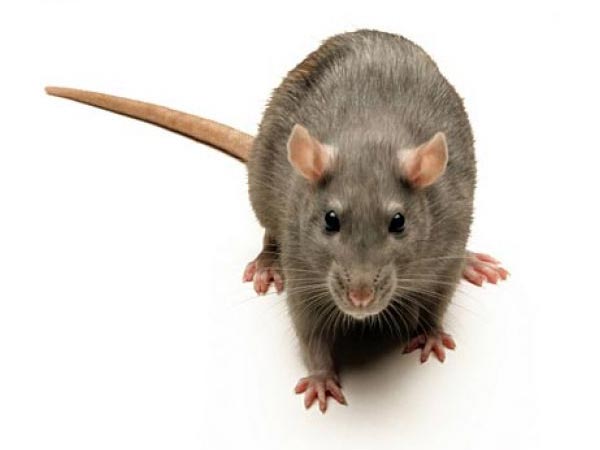About Rodents
There are three species of introduced rodents in Australia. They are the Norway or brown rat (Rattus norvegicus), the roof or black rat (Rattus rattus), and the house or field mouse (Mus musculus). There reputation as a pest is legendary because of their ability to contaminate and spoil food, spread disease, and cause physical damage combined with the prolific rate at which they reproduce. In fact rats contributed to the deaths of over 25 million people in Europe by being the carrier of the bubonic plague (Black Death). Rodents are incontinent which means they basically dribble urine where ever they go, including your kitchen bench. Because rats and mice front teeth continually grow they must continually gnaw or chew to keep them to a functional size. Electrical wiring has been damaged in this way, resulting in house fires.
 We often have phone calls from people believing they have possums in the roof which turn out to be rats. This is due to two reasons firstly most people don’t want to acknowledge the idea that they have rats in their roof because to most rats are a sign of dirtiness but the fact is rats aren’t that discriminate! The second reason is the noise to most is way too loud to be a little rat, but roof cavities tend to amplify any noises especially non-insulated ones. I often describe to clients that mice sound like their wearing sneakers, rats sound like their wearing footy boots and possums sound like their wearing gumboots!
We often have phone calls from people believing they have possums in the roof which turn out to be rats. This is due to two reasons firstly most people don’t want to acknowledge the idea that they have rats in their roof because to most rats are a sign of dirtiness but the fact is rats aren’t that discriminate! The second reason is the noise to most is way too loud to be a little rat, but roof cavities tend to amplify any noises especially non-insulated ones. I often describe to clients that mice sound like their wearing sneakers, rats sound like their wearing footy boots and possums sound like their wearing gumboots!
People often spot a rat in their garden and believe it’s a native rat, the fact is native rats avoid human habitation and the culprit is more than likely a roof rat (Rattus rattus) which is physically different (see species notes) from the typical brown rat (Rattus norvegicus) that most people are familiar with. Rats and mice are highly adaptive meaning they occur in all types of environments from the very busy area of Hastings St, the classy homes of Noosa Waters, to the highly vegetated areas of Doonan.
What Can You Do?
By far the most effective method of control is baiting. The key to baiting is to be proactive rather than reactive. Most people wait until they have a problem, then wait until they go to the shop next, and then wait until the husband can be motivated enough to drag the ladder out of the garage and get up in the roof and so forth. By this time the problem has gotten bigger and the truth is you tend not to hear or see rodents when there is only one or two, you tend only to hear them when once they’ve bred and the dominant male is trying to drive the younger males out of his territory. And you tend only to see the younger more inexperienced rodents rather than the older, wiser and shyer individuals. So basically waiting until you hear or see rodents means you end up using more bait and increase the risk of one dying in your roof. Having bait waiting in your roof for those individual rodents when they first enter your roof will prevent them from setting up camp and raising a few families. Then simply mark on your calendar to inspect and/or replace the bait every 3-6 months depending on the rodent pressure. Avoid using rodenticides (rat bait) which contains the active ingredient warfarin, although a very effective rodenticide it is known as a multi-dose rodenticide which means that if you don’t put enough out some rodents will recover and this bait tends to have a very high incidence of mortality in your roof. If baiting I cannot stress enough the importance of not placing baits where non-targets such as children and pets can access it. Use tamper resistant bait stations whenever in doubt.
Some people don’t like to bait for several reasons, but the fact is rodents won’t go away on their own, in fact the longer the problem goes on, the harder the problem is too control. Rats especially, establish pathways around your property leading into your house, which can lead other rats passing through straight into your house. The bigger and longer the problem goes on the more bodies will die in your roof even without baiting.
You can however take some measures that can make your house less rodent friendly. Pruning back any trees or shrubs that are in contact with your roof line can reduce their accessibility to your roof. Proofing possible entry points can reduce access into your house. Remember the rule “mice can fit through a space as small as your little finger and rats can fit through a space as small as your thumb”. Service pipes to facilities such as your dishwasher are common entry points. Be sure to use durable materials, expandable foam is not one, but steel wool is and can be handy if packed tightly. Don’t forget your door seals especially the one into your garage (roller doors are not very rodent proof ). Bird aviaries and chook sheds are magnets for rodents, so try making them rodent proof, build them away from your house and use bait in tamper resistant bait stations around them. Don’t leave any uneaten dog or cat food out overnight.
Traps are not very effective, they tend to only catch young and gullible rodents not the older wiser ones. Independent studies have shown ultra sonic devices to have limited affect despite their claims.
If you are unsure as to whether you have possums or rats in your roof, place an apple inside the manhole entry to your roof and check the next day. If the apple is virtually gone then it’s probably a possum, if the apple is only partially eaten and lots of teeth marks evident then it’s probably rats. You don’t want to accidently bait a possum so if you are unsure its probably best to contact your pest manager.
What Can We Do?
Get rid of your rats and mice that’s for sure! A typical rodent treatment by us would begin with an inspection to identify the species, size of the population, activity areas and possible entry points. After this we bait these activity areas using tamper resistant bait stations if there is a possible risk of non- target poisoning. We use a combination of single dose rodenticides which reduces the risk of mortality in your roof. We use a combination of baits as some rodents even within the same population can have different bait type preferences. For example grain based baits and wax block type baits. As well as baiting we also have range of other tricks up our sleeve if required. Dusting entry points with a tracking powder can be an indirect way getting rodents to ingest a rodenticide. This tracking powder can also be used to mix up with other food sources for bait shy individuals. We can also use a liquid rodenticide when solids aren’t successful. We then advise you on steps you can take yourself to reduce the risk of another infestation once this initial problem is under control. Remember proofing shouldn’t take place until after the problem is under control otherwise you could lock the rodents in your house. Some of our clients get a rodent treatment done at the same time as their house sprayed for spiders and ants as a preventative treatment.
What to Expect After the Treatment?
Full control of rodents can take up to 2-3 weeks. This is because we need to allow time for them to find the bait and then for the bait to work. Because we use single dose rodenticides, death occurs 4-6 days after ingestion this allows time for the affected rodent to leave the building and die elsewhere. Although these baits are designed to minimize death in your roof, reality is 80-90% will die elsewhere as intended. Therefore if you have just 1 or 2 rats living in your roof then you’d be very unlucky to have one die in your roof, however if you had a population of twenty rats living in your roof then there’s a fair chance you might get a casualty in your roof. But don’t get discouraged by this as you generally only smell them if they die near a down light, power point, vent or ducting. Mummified rats in roof cavities are very common; trust me I spend a lot of time in them. Most people believe that because rodenticides are anti coagulants this makes the rodents thirsty and they go in search of water that’s why they die outside. Personally I’m not a big believer in this theory and have a theory of my own. When a rat or mouse consumes bait it gradually starts to feel unwell and uncomfortable and just like a cat or dog when they feel sick get the wanders, once out of the house the rat or mouse gets disorientated and wanders further away and dies.
How long it lasts depends on the amount of rodent pressure from neighboring areas.
Even after the initial problem is under control sometimes a noise might be heard in the roof a few months later. Don’t panic at first unless the noise persists for more than a week. Baits can’t stop rodents entering your house just get rid of them once they’re in. That’s why it’s important to have bait waiting and we place more bait than is necessary to control the initial population. But just like all our general pest treatments we give a six month free service period on all our internal rodent treatments, so if the noise does persist we will come back and retreat at no charge!

